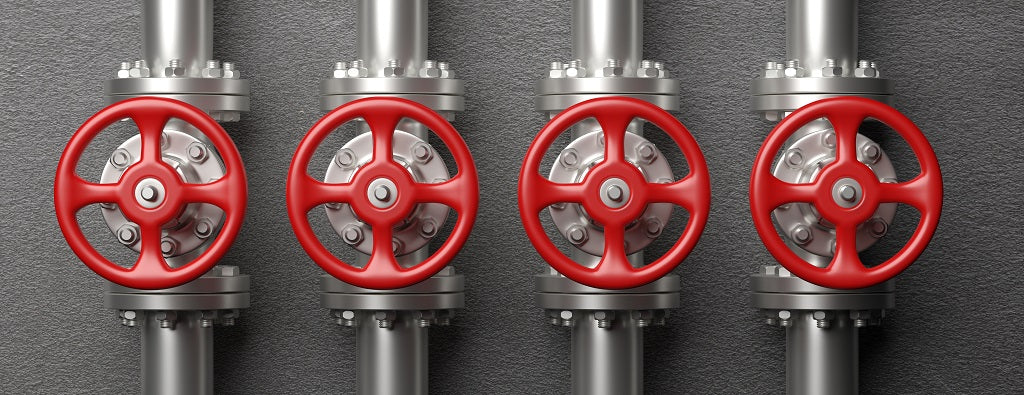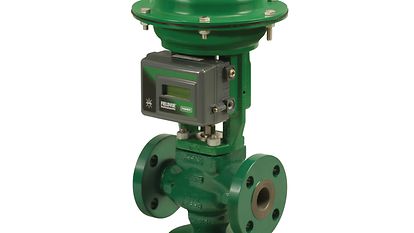Selecting the Right Control Valves: A Guide to Optimal System Efficiency
Selecting the Right Control Valves: A Guide to Optimal System Efficiency
Blog Article

Maximize Energy Savings and Convenience With Advanced Building Automation Controls
In the realm of modern-day style and center management, the combination of innovative structure automation controls stands as an essential advancement. The merging of innovation and sustainability has actually birthed a brand-new era where energy effectiveness, convenience optimization, and operational streamlining are no much longer far-off goals yet obtainable facts. By harnessing the power of automation, buildings can adapt, respond, and evolve in ways that were once unimaginable. The potential for considerable power financial savings and enhanced comfort is not just an assurance but an opportunity waiting to be fulfilled. This paradigm shift in building monitoring holds the vital to unlocking a globe where ecological conscientiousness and resident well-being harmoniously exist together within the walls of our frameworks.
Energy Performance Benefits
Energy efficiency benefits can considerably minimize power consumption and operational prices in structures. By implementing energy-efficient practices and innovations, structure owners and operators can attain substantial savings while also adding to environmental sustainability. Among the key benefits of improving energy efficiency in buildings is the decrease of utility bills. Energy-efficient systems, such as sophisticated building automation controls, can optimize making use of resources like heating, illumination, and air conditioning, resulting in reduced energy expenditures with time.
Additionally, improved energy performance can lengthen the lifespan of building equipment and systems. By running extra efficiently, cooling and heating systems, lighting components, and other building parts experience less deterioration, leading to lowered upkeep and substitute prices. Additionally, energy-efficient structures typically command greater building values and rental prices, providing long-lasting monetary benefits to owners.
Furthermore, power effectiveness can improve occupant comfort and productivity. Appropriately controlled interior settings with optimal lighting and thermal problems develop a more favorable and enjoyable work area, leading to boosted worker complete satisfaction and efficiency. In general, the energy performance advantages related to advanced building automation controls are complex, including expense savings, ecological stewardship, and owner wellness.
Enhanced Convenience Control
Enhancing comfort control in structure settings needs an innovative assimilation of innovative automation systems for optimum resident wellness. By utilizing advanced building automation controls, centers can tailor the interior atmosphere to fulfill the details demands and choices of residents. These systems allow precise policy of temperature level, ventilation, and lights, producing a comfortable and efficient atmosphere. Owner contentment and efficiency are closely linked to thermal comfort, making it important to have systems in location that can adapt to changing conditions in real-time.
Improved convenience control goes past standard temperature adjustments. It includes features such as personalized settings, occupancy sensing units, and all-natural light application to create a dynamic and receptive environment. By integrating these advanced controls, structures can not just boost convenience yet also enhance energy performance by optimizing system procedures based upon real occupancy and usage patterns. Eventually, focusing on occupant comfort via advanced automation systems results in an extra delightful and healthier indoor atmosphere.
Functional Performance Improvements

In addition, the implementation of real-time surveillance and analytics devices allows building drivers to recognize power ineffectiveness and operational abnormalities without delay. By constantly checking power use patterns and system efficiency metrics, adjustments can be made in real-time to enhance power usage and ensure peak operational performance. control valves. Furthermore, including demand action strategies right into structure automation controls can additionally improve functional performance by dynamically adjusting energy usage based on grid problems and prices signals
Indoor Climate Optimization
Reliable indoor climate optimization is a basic aspect of structure automation controls, ensuring owners' convenience and well-being while making best use of power financial savings. By using innovative sensors and controls, constructing automation systems can continually change and keep an eye on temperature, humidity levels, air top quality, and air flow to produce an ideal indoor setting. Preserving comfy and consistent conditions not just improves occupant complete satisfaction but also increases efficiency and general health.
Indoor environment optimization also plays an important role in energy performance. By fine-tuning air conditioning, home heating, and air flow systems based upon real-time data and tenancy patterns, constructing automation controls can substantially decrease power usage - control valves. For example, executing methods such as demand-controlled ventilation and thermal zoning can help reduce energy waste while making sure that each area of the structure gets the required conditioning.

Sustainable Environment Development
Building automation regulates not just maximize interior climate problems for energy efficiency and owner convenience but additionally lay the foundation for producing a sustainable environment with strategic management of sources and systems. By integrating sophisticated building automation technologies, such as sensors, actuators, and intelligent software program, centers can adjust and keep an eye on power use in real-time to reduce waste and reduce their carbon impact. These systems allow anticipating upkeep, determining potential issues before they escalate and optimizing equipment performance to improve long life and efficiency.
Furthermore, lasting environment production prolongs past energy management to incorporate water preservation, waste decrease, and indoor air top quality improvement. Structure automation controls can manage water usage, find leaks, and guarantee correct garbage disposal techniques, adding to general sustainability efforts. Additionally, by managing and checking ventilation and filtering systems, these technologies boost passenger wellness and performance while reducing power intake linked with heating and cooling operations.
Final Thought
In conclusion, progressed structure automation controls offer considerable advantages in terms of power savings, convenience control, functional performance, interior climate optimization, and creating a sustainable atmosphere. By applying these controls, buildings can attain optimum efficiency while lowering energy intake and boosting occupant convenience. It appears that making use of advanced automation innovation is critical in boosting structure efficiency and producing an extra sustainable future.
Power effectiveness benefits can substantially reduce energy consumption and functional expenses in buildings. Generally, the power performance benefits linked with sophisticated structure automation controls are multifaceted, incorporating Click This Link cost financial savings, environmental stewardship, and resident health.
Furthermore, incorporating need response techniques into building automation controls can even more boost functional performance by dynamically readjusting energy usage based on grid conditions and pricing signals.
Building automation controls not only enhance indoor climate problems for power effectiveness and passenger convenience but likewise lay the structure for creating a sustainable environment through strategic monitoring of systems and sources.In verdict, progressed structure automation manages offer considerable benefits in terms of energy savings, convenience control, functional efficiency, interior environment optimization, and producing a sustainable environment.
Report this page